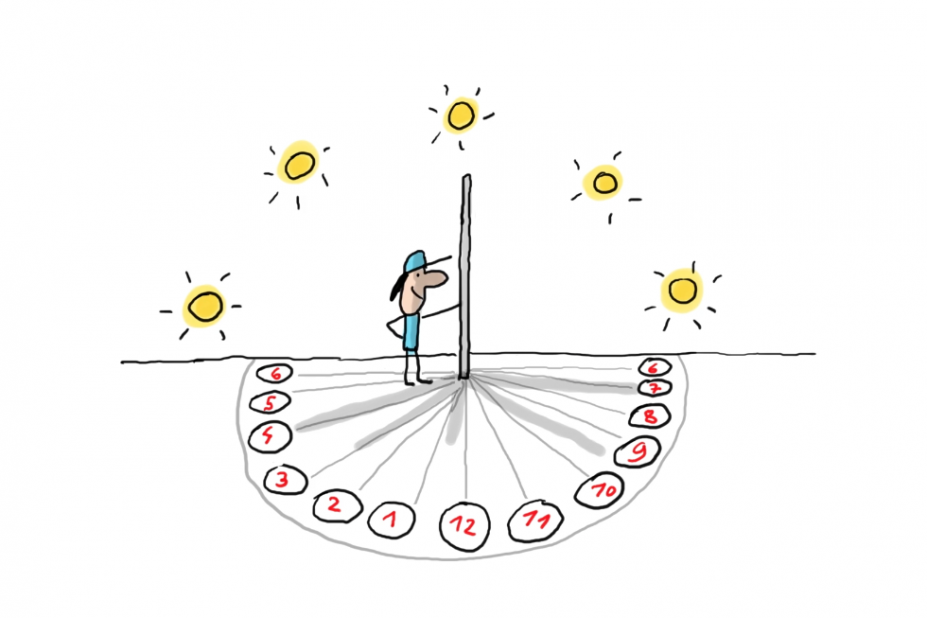You need to know the time so you don’t miss your snack and to count the seconds until the end of class!
Time helps us to be synchronised, and to be organised without having to think about it.
It helps us know where we are in the day, like page numbers help us know where we are in a book.
But where does time come from?
The first instrument invented to measure time, over 2,000 years before the Common Era, was the sundial.
Thanks to the shadow the sun cast on the ground, you can tell what time it is.
At midday, the shadow is tiny. At sunset, the shadow gets longer and longer…
So if you put a rod in the middle of a dial, the shadow of the rod will move throughout the day and show the time.
Early on, the day was divided into 12 hours. We talk about daylight hours.





 Retour
Retour